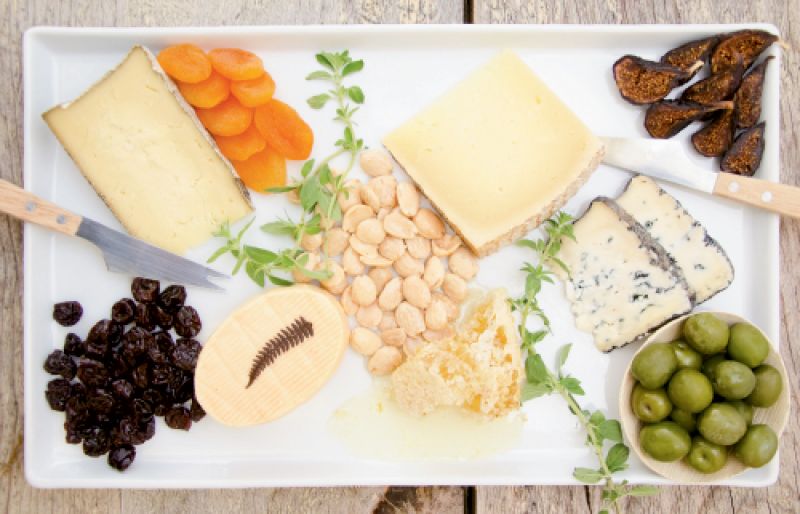
❶ Go to the experts. Like a butcher or fishmonger, staffers at a good cheese shop can help you navigate the inventory and make the selections that best fit your needs.
❷ Choose one each of these four types of cheese: soft, semi-soft, hard, and bleu. It’s a simple rule that results in the right balance of textures. And don’t skip the bleu. Even if you’re not a huge fan of its strong flavor, someone at your picnic or party will be.
❸ Once you have your four picks, add an accouterment or two that provides a balance of salty and sweet flavors. As most cheeses have a salty component, try this fail-safe presentation: place a honeycomb cut into angles in the center of a rounded platter and arrange the cheese around it. The sweet nectar will ooze deliciously onto the fromage.
❹ Don’t sweat the wine pairings; at the end of the day, it’s all about personal preference. Typically, big reds pair well with aged cheeses, such as Gouda, and whites pair with delicate picks, like goat’s milk blends.
❺ Goat.sheep.cow is more than a company name; it’s also Wagner and Floersheimer’s mantra for taking a cheese plate to the next level. Bonus points for incorporating cheese made from all three animals’ milks.